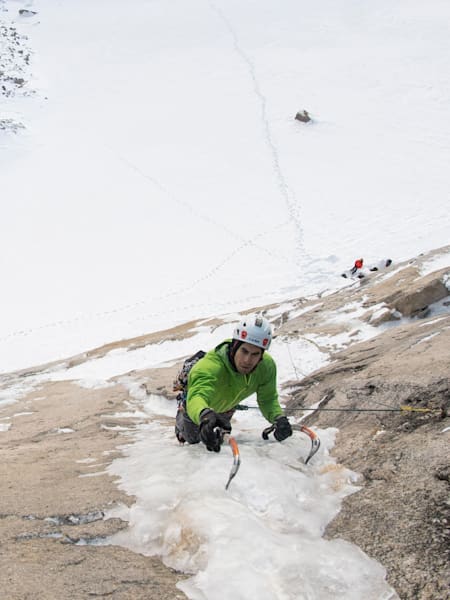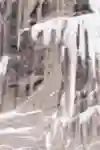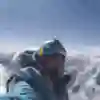In early autumn, an early season cold snap hit Colorado. Ice climbers Tyler Kempney and Wesley Fowler had a fleeting shot at their goal. With videographer Drew Herder, the team hiked through the night to catch their objective at dawn: The first ascent of a fragile ice strip bonded to a granite slab at 3,800 metres on the East Face of Longs Peak in Rocky Mountain National Park.

To climb the route is like defusing a bomb. Razor thin ice tools must pierce the half-inch thick veneer of frost without shattering it. When the ice runs out, rock edges must be hooked for upward progress. Loss of balance, a slip of attention or swinging too hard into the frozen glass could lead to a 30-metre fall.
This isn’t your typical ice route. And Kempney, who learned the trade by scratching his way up the frozen walls in the Adirondacks, New York, isn’t your average ice climber. Neither is his partner Wesley Fowler, a guide with Colorado Mountain School and one of few climbers to have ticked the hardest mixed route in North America, Saphira (M15-).
Other top alpinists have gone up there and said this route is not safe, not protectable. And they’re right. But I know I can hold on
Because the route is dangerously runout, with one unprotectable 18-metre stretch, Fowler and Kempney have to rely on precision and experience to keep them from falling. “I believe my body is capable of it. My brain just has to turn on to complete it,” Fowler says.
Kempney adds: “It all sounded hollow, so I kept my pace slow. Feeling the ice and listening closely to it as I pressed on. I could feel my boots vibrate with each swing of my ice tool.”
Fowler climbed the first rope length, a ramp of rock and a short section of slim and bubbly ice. Kempney led the next section: a runnel that led to what they came for, a half- to three-inch-thick frozen shield of white. To ascend this section, Kempney lightly tapped the tips of his ice picks into the frozen water until they hooked in place, then he carefully kicked his crampon points into frozen blobs. As he moved up, he broke crystals free that cascaded down the wall, chiming like chandeliers smashing to pieces.
As if the climbing wasn’t tenuous enough, winds roared around the climbers. “It was a suffer fest for sure,” videographer Drew Herder says. “It was the windiest day I’ve experienced anywhere.”
And what did the team do after completing the route? They returned the following week, lucky to find it still in condition, and climbed it again. This time Kempney led the first half and Fowler led the second half. Herder captured footage.
“The realization that no one had been in that spot before – that feeling alone was one of the more exhilarating parts about doing it,” Fowler says.





